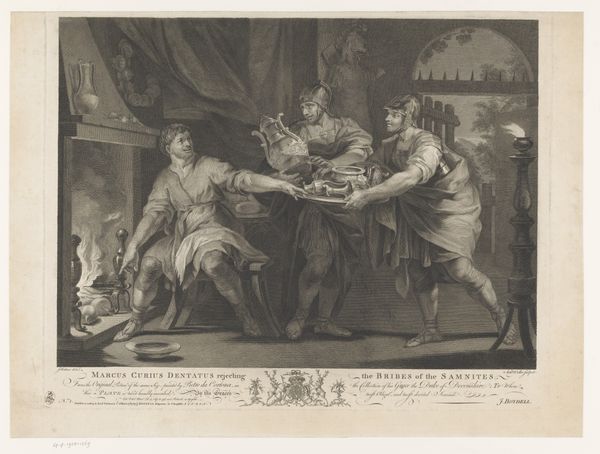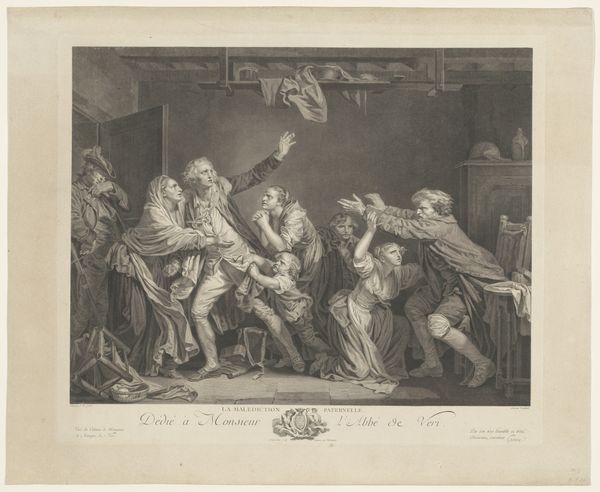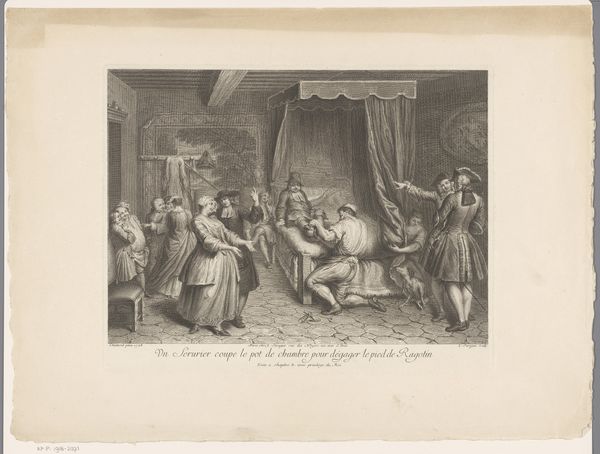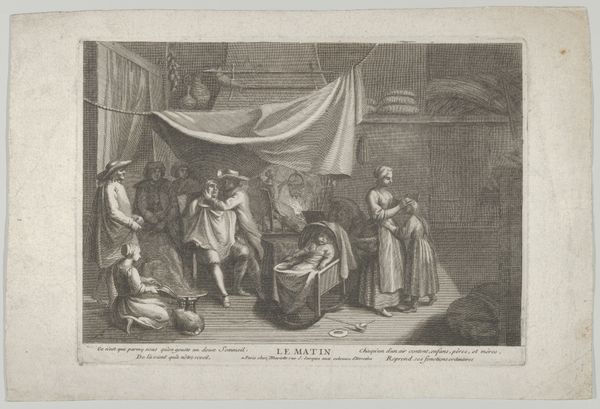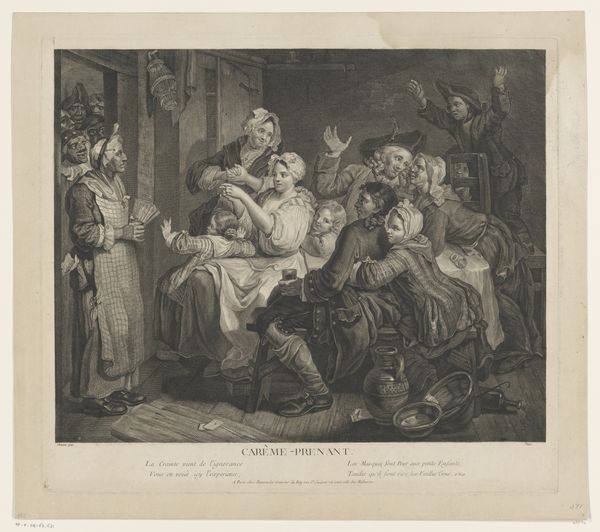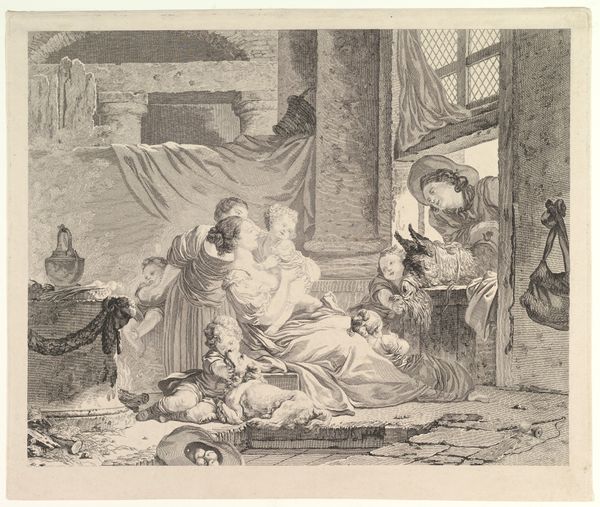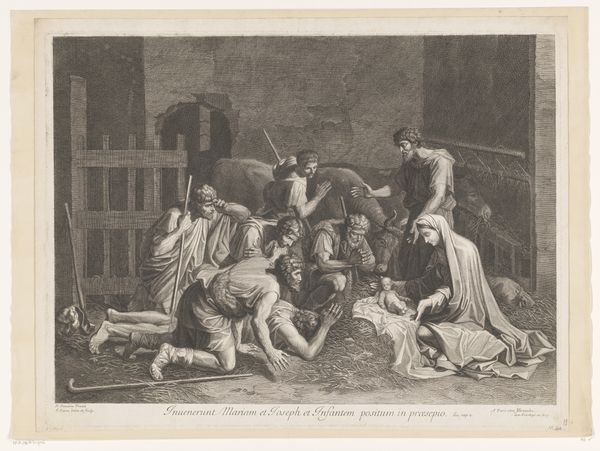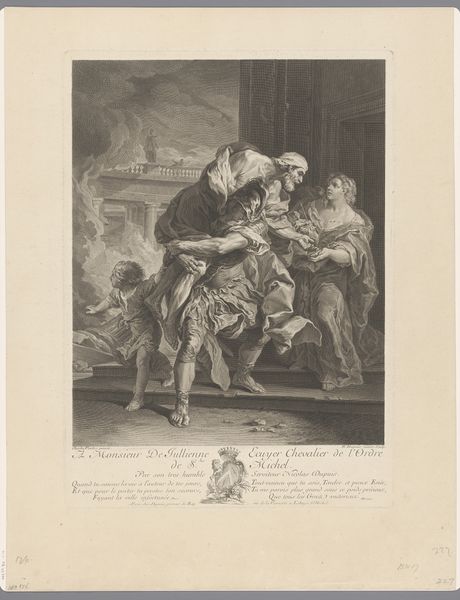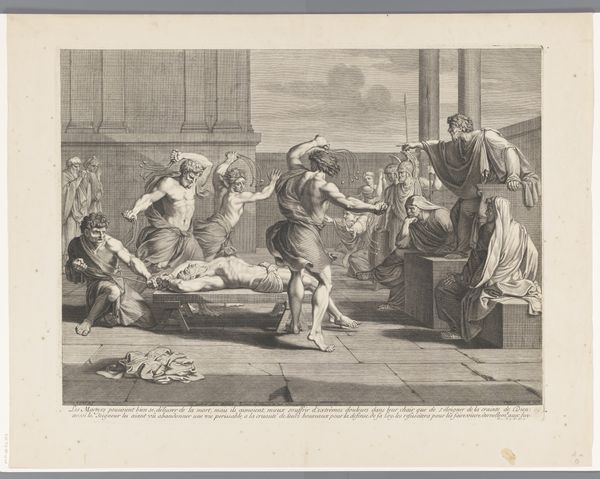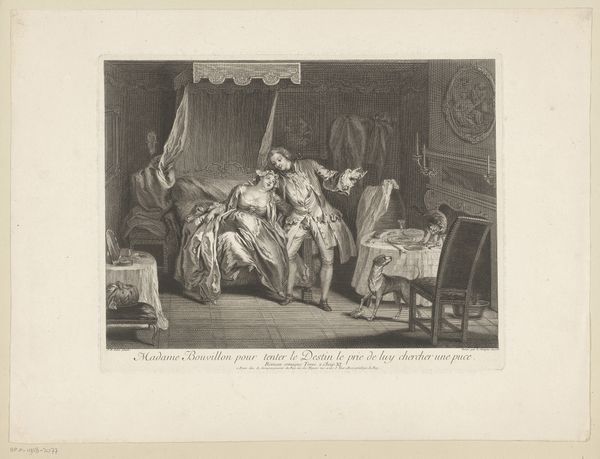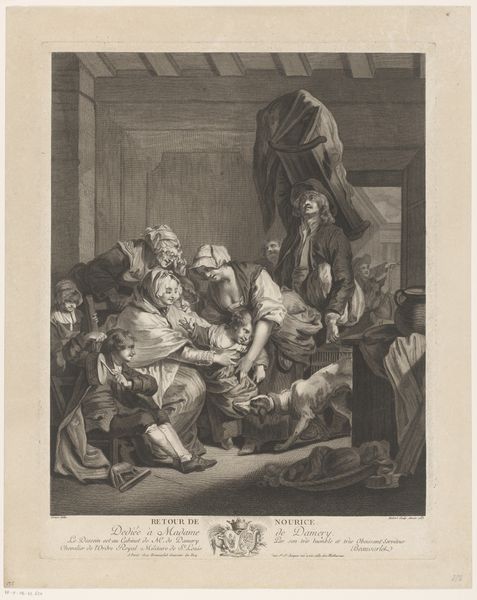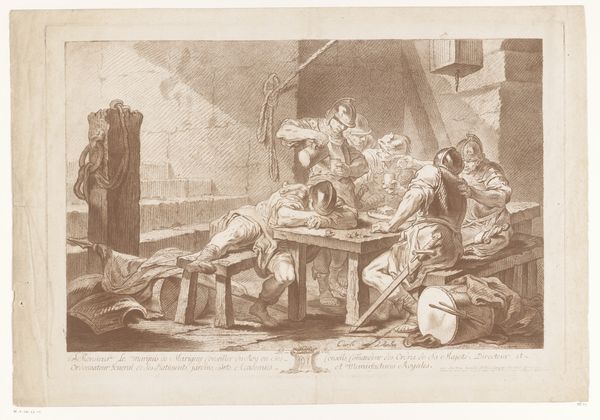
print, engraving
#
narrative-art
#
baroque
# print
#
old engraving style
#
classical-realism
#
figuration
#
line
#
history-painting
#
engraving
Dimensions: height 420 mm, width 500 mm
Copyright: Rijks Museum: Open Domain
Curator: Here we have Nicolas de Poilly's "Death of Cleopatra," an engraving made sometime between 1636 and 1696. The work is part of the Rijksmuseum's collection. My first impression is of stillness and dramatic tension, all rendered in incredibly fine lines. Editor: It certainly has that theatrical Baroque drama, doesn't it? Look at the details, the technique of line engraving… think about the physical process involved in creating such an image. The labor! The artist painstakingly etched these lines into a copper plate, and then each print had to be pulled. What kind of workshop would de Poilly have had? Were apprentices involved in some of the more mechanical parts of this creation? Curator: Good point. But those lines themselves are far from mechanical. Consider what they represent: Cleopatra, the serpent, the horrified Roman soldiers. The asp, of course, is age-old symbol of Egyptian royalty but also of treachery. And look at the Roman soldiers – their expressions of shock and, dare I say, guilt? They represent the demise of one empire at the hands of another. Editor: Absolutely, the Roman presence looms large, not only as conquerors but also as consumers. Consider how many impressions were made from this copper plate, the ways in which this image was circulated, sold, and displayed. This wasn’t just about the glory of Rome, but about the market for such imagery, the business of art production and reproduction in that time. Curator: I see your point, but the story remains paramount for me. Note how Cleopatra is depicted, still regal even in death. It’s a far cry from defeat; instead, it suggests defiance, even a sort of triumph over Roman subjugation. Her legend continues to echo through this image. Editor: It’s fascinating how the choice of materials also reinforces certain class dynamics. Copper for the plates, quality paper for the impressions—the access to these materials signals wealth and connection, shaping who got to tell or, in this case, engrave history. Curator: So, for you, the importance of this piece really hinges on labor, access, and material conditions surrounding its creation? Editor: Exactly! The physical existence of the print is testament to all of that labor, access, and its life as a commodity. Curator: And for me, it speaks to enduring symbols of power and resistance embedded within the Cleopatra myth. Editor: Perhaps it speaks to both. The symbols made material, and disseminated widely. Curator: Indeed. A compelling end for an audio guide.
Comments
No comments
Be the first to comment and join the conversation on the ultimate creative platform.
